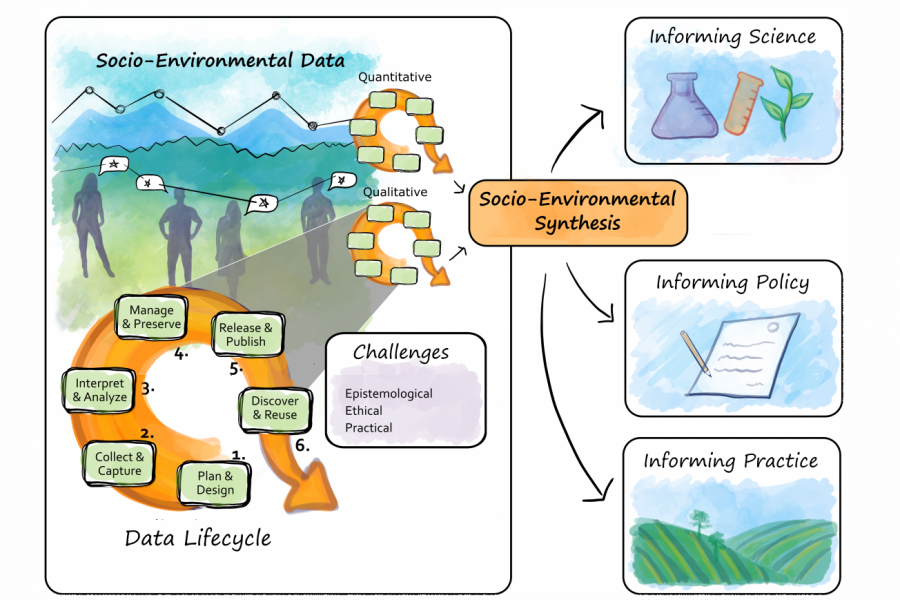
How using qualitative data could address socio-environmental problems
Traditionally, socio-environmental synthesis has involved using quantitative, or numerical, data to inform its findings. In a new Nature Sustainability article, however, researchers from the University of Maryland’s National Socio-Environmental Synthesis Center (SESYNC), make the case for why including qualitative data in socio-environmental (S-E) synthesis could benefit sustainability science, policy, and practice.
The article, titled “Qualitative data sharing and synthesis for sustainability science,” emerged from a Qualitative Data Sharing workshop led by former SESYNC postdoc Steven Alexander and SESYNC-affiliated researcher Kristal Jones held at SESYNC. In their article, they explain how broadening the pool of evidence used when synthesizing existing social and environmental data can help scientists develop solutions to complex S-E problems. Qualitative data, such as interview transcripts, recorded observations, photographs, or recordings of oral history, not only provide greater social, cultural, and historical context of S-E systems but greater multidimensional understandings of them, as well.
Currently, there are significant epistemological, ethical, and practical challenges associated with sharing qualitative data. To address these issues, the researchers put forth a framework in the article for enabling qualitative data sharing with clear actions for researchers, research institutions, funders, data repositories, and journals and publishers to take. The article states, “At the core, qualitative data sharing and re-use demands commitment, support, and coordination from the entire research community.”
Contributing authors to the article include: Nicole Motzer, SESYNC’s Assistant Director for Interdisciplinary Science; Julie Silva, former SESYNC Scholar-in-Residence; and Dean Hardy and Heather Randell, former SESYNC postdocs.
Media Contact: communications@sesync.org